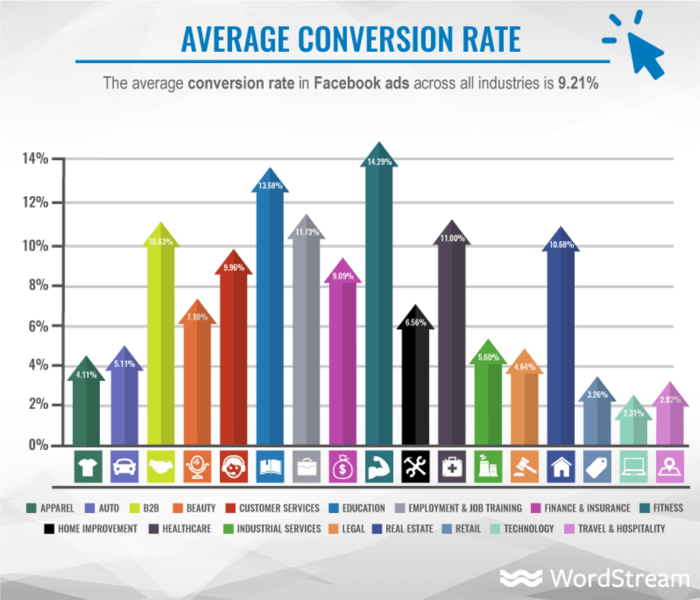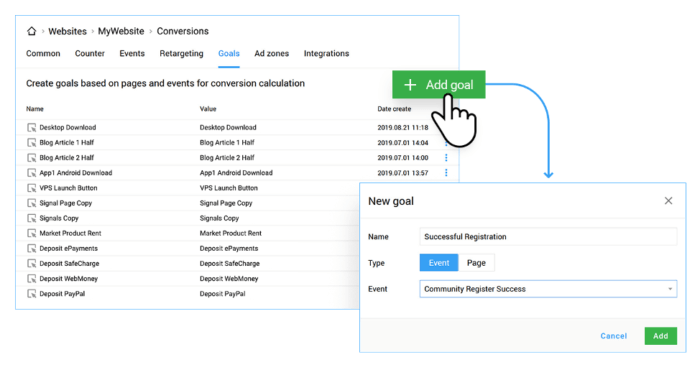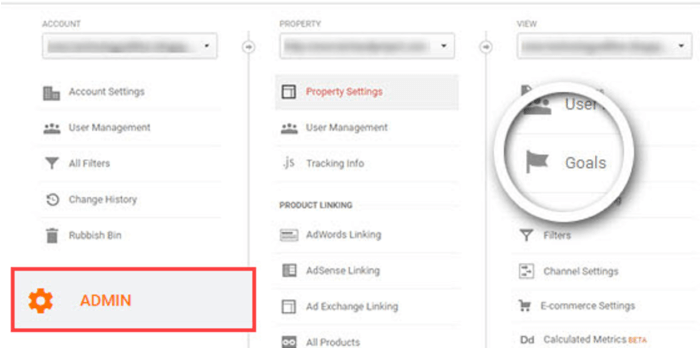Conversions can be tricky things to keep on top of, and all businesses are different, so how will you know where to set the bar?
Failing to prepare means you're preparing to fail. Even if things are going well, it’s still important to carry some form of preparation, otherwise, how will you know when you’ve hit your targets?
When it comes to the wide world of driving conversions, most websites will agree that the more they leverage, the better. While this is, of course, completely true, marketing strategies are complex and often expensive entities that require constant monitoring and plenty of funding. Due to this, it’s important to set goals and targets as you go, so you’re fully aware of when you’ve achieved everything you’ve set out to do and can successfully close your campaign.
Ready to achieve customer conversion growth?
Find more expert advice and strategic marketing training designed to increase your conversions and get results, fast.
Kick-start growth
Conversions can be tricky things to keep on top of, and all businesses are different, so how will you know where to set the bar? Luckily, we live in an era that’s driven by metrics. Everything, from marketing websites to the industry’s leading tools are driven almost entirely by quantifiable metrics.
With this in mind, we can accurately contextualize the metrics that could help to drive your business. Let’s take a deeper look at the world of marketing from a numerical perspective, and see if data can help you to establish conversion goals that are right for your website.
The art of the conversion
As the table above illustrates, conversions and the rate at which they occur can differ wildly depending on lots of things - not least the industry that the website in question hails from. MarketingSherpa defines a ‘conversion’ as “the point at which a recipient of a marketing message performs a desired action.” this means that conversion is simply the name given to the act of getting someone to respond to your Call-To-Action.
By this logic, the act of a recipient reading an email can act as a conversion, and so too can successfully encouraging them to click on a Call-To-Action link within an email. Landing page interactions can count as a conversion and the ultimate act of buying a product can count as a conversion too.
This broad definition offers a degree of flexibility for website owners who are looking to set different goals alongside their respective Call-To-Actions and landing pages.
In the world of e-commerce, conversions can mean anything that encourages a prospective customer to successfully interact with the company. If somebody scans a QR code to receive a product voucher then this simple act can be interpreted as a successful conversion.
More B2B-oriented businesses can have a more complex trail towards conversions that require visitors to interact with the business via email, engagements and on the website pages in a bid to raise the overall reputation of the company in question.
Because of the range of meanings and interpretations surrounding conversions in marketing, it’s logical for a business to set goals in order to turn relevant metrics into contextually appropriate charts of success and to ensure that all stakeholders are on the same page in an organizational sense.
It can be difficult setting the same goals for multiple members of staff, but luckily there are plenty of web analytics tools out there to help users on their path to success.
Optimized pages
So, now we’re aware of the importance of conversion goals, let’s take a look at the numbers that will help to inform businesses of where to set such goals.
One of the largest drivers of conversions in marketing can be found in the form of landing pages. Amazingly only 52% of the companies that run landing pages actually bother running tests into their effectiveness. It’s also been found that businesses that use videos within their landing pages can boost their conversions by a seismic 86%.
The diversity of landing pages has proved to be limited, with only 48% of companies bothering to set up brand new landing pages for a new campaign. The approach of tweaking existing landing pages may save time but due to different campaigns requiring different kinds of language, it’s possible that audiences won’t be quite as impacted in the same way.
Some 62% of businesses have just six or fewer landing pages, but Kyleads data shows that they can expect a 55% increase in conversions by increasing their total number of landing pages to between 10 and 15.
With this in mind, it’s important to anchor your goals to the number of hours you’re capable of investing in your campaigns. Advertising products and services will be effective, but without the right range of landing pages in place, the overall effect of campaigns will be mitigated by fewer conversions.
Putting in fewer hours doesn’t mean that you’re less committed to your marketing campaign - after all, small businesses may need members of staff positioned in more practical roles during their formative months - but it does call for more introspection when it comes to assessing what you want to take from your campaign.
Promoting conversions
Conversion rates are hard work at the best of times, and users can be put off by relatively low percentages of visitors completing conversions. Depending on your definition of conversion, rates typically range from around 1-3%. While these figures seem minuscule compared to the volume of interactions, impressions or traffic coming to your business, it’s important to note that if you set out to double your rate of conversions from 1% to 2% - that single digit of improvement would see your business double its sales revenue.
If for your business, a conversion might mean a prospective customer signing up to a newsletter, it’s worth noting that Kyleads claims that the average email opt-in rate for businesses stands at 1.95%. Once again, this may seem like a modest figure, but it can pay dividends for your business if optimized in the right way.
One of the most effective means of promoting conversions is by leveraging user-created content. Predominantly coming in the form of product reviews but carrying a few further-reaching applications, user-generated content can increase conversion rates by as much as 161%.
These figures are just as well because 68% of small businesses don’t have any form of documented or structured CRO strategy.
Target setting
Target setting when it comes to managing your conversion rates can be an excellent way of monitoring your progress and discovering which approaches yield more success.
There are hundreds of web analytics platforms out there that are designed to help users to establish their own business conversion goals in a way that monitors their progress automatically.
Google Analytics is a good tool to start with when it comes to tracking conversions.
Finteza is a good tool to set up conversion goals which are automatically updated whenever a specific conversion is registered.
If your goals are centered around customer queries and support, Intercom could be a great option to explore.
In a world that’s becoming increasingly competitive, where companies are investing astronomical sums into effective marketing campaigns to draw the attention of prospective customers, it pays to invest some time in establishing a clear range of conversion goals to help you to monitor your business’ success.
With the right range of metrics, users can establish achievable conversion goals and get incrementally notified whenever progress is made towards achieving said goal. In a world driven by metrics, it’s a great asset to keep track of where your website stands once in a while.
Dmytro Spilka is the Founder and CEO at
Solvid. Founder of Pridicto, an AI-powered web analytics SaaS that enables users to forecast website traffic and set visual aims. Dmytro’s work has been featured in Entrepreneur.com, SEW, ClickZ, TechRadar, ReadWrite and ITProPortal.












